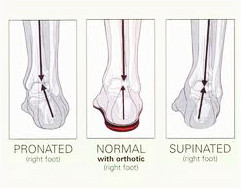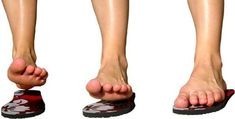
Orthotics
How are your foot orthotics made?
The only method that has been shown to be effective in producing quality, functional, custom foot orthotics is a three-dimensional non-weight-bearing laser scan or cast of the foot. In this technique, the foot is held in a precise position – essentially this is the position in which it should function. The image of the foot can be taken using a laser scan, with plaster, or with fiberglass. All of these techniques can provide the same quality image as long as the foot is held in the correct position while the image is taken. We use plaster casting on your feet to capture 3D casts. These casts are then sent to our lab, and the custom orthotics are made and typically are sent to our office in 3 weeks; and at this time, we will schedule an appointment for them to be fit to your feet. Plaster casting has been shown to be the preferred method for obtaining an accurate casting of your feet for custom, functional orthotics.
What are orthotics?
Orthotic devices are shoe inserts that are intended to correct an abnormal or irregular walking pattern. Orthoses are not truly or solely "arch supports," though some people use those words to describe them, and they perhaps can best be understood with those words in mind. They perform functions that make standing, walking, and running more comfortable and efficient, by altering slightly the angles at which the foot strikes a walking surface.
1. Rigid Orthoses
Rigid orthoses are chiefly designed to control motion in two major foot joints, which lie directly below the ankle joint. These devices are longlasting, do not change shape, and are usually unbreakable. Strains, aches, and pains in the legs, thighs, and lower back may be due to abnormal function of the foot, or a slight difference in the lengths of the legs. In such cases, orthoses may improve or eliminate these symptoms, which may seem only remotely connected to the foot function.
2. Soft Orthoses
The second, or soft, orthotic device helps to absorb shock, increase balance, and take pressure off uncomfortable or sore spots. It is usually constructed of soft, compressible materials, and may be molded by the action of the foot in walking or fashioned over a plaster impression of the foot
3. Semirigid Orthoses
The third type of orthotic device (semirigid) provides for dynamic balance of the foot while walking or participating in sports. This orthosis is not a crutch, but an aid to the athlete. This functional dynamic orthosis helps guide the foot through proper functions, allowing the muscles and tendons to perform more efficiently.
The information contained in this website is for educational use only and is neither intended nor implied to be a substitute for professional medical advice. Always seek the advice of your physician or other qualified health provider prior to starting any new treatment or with any questions you may have regarding a medical condition. Nothing contained within or pertaining to this site should be used for medical diagnosis or treatment.






